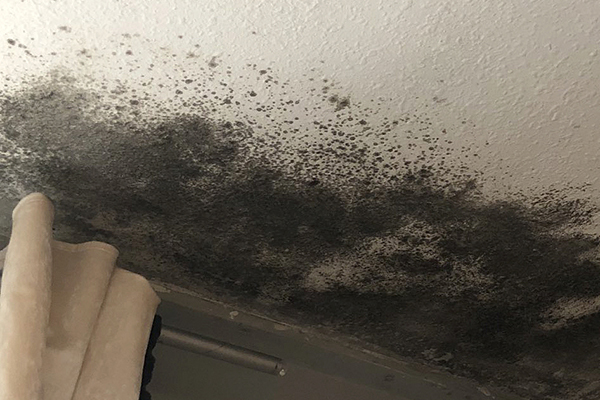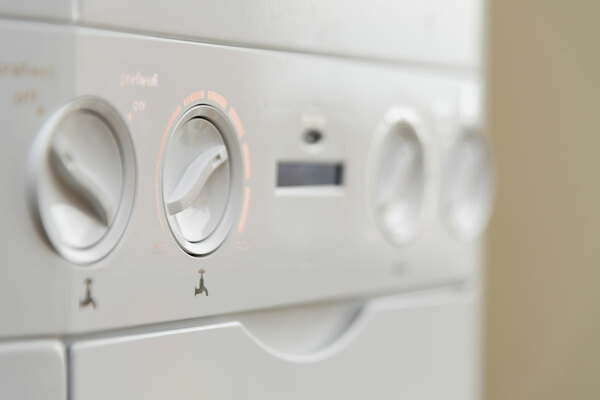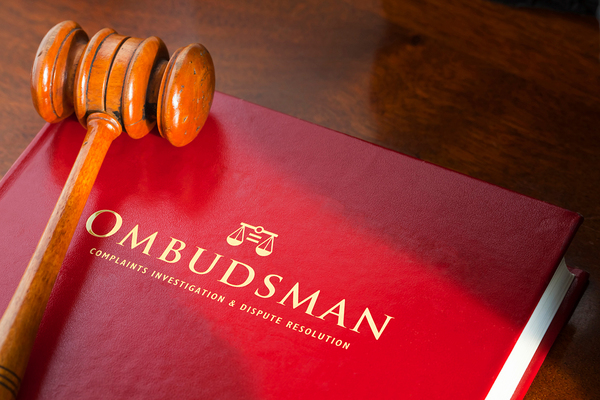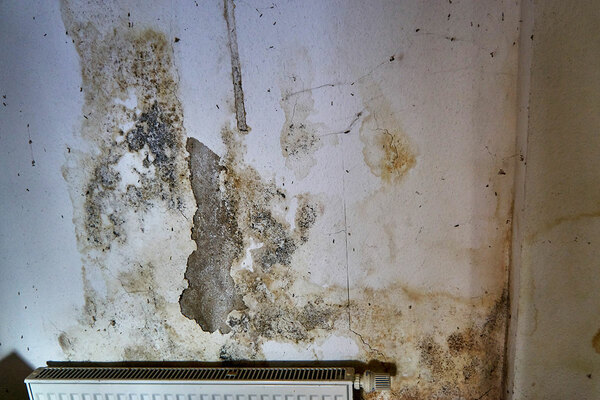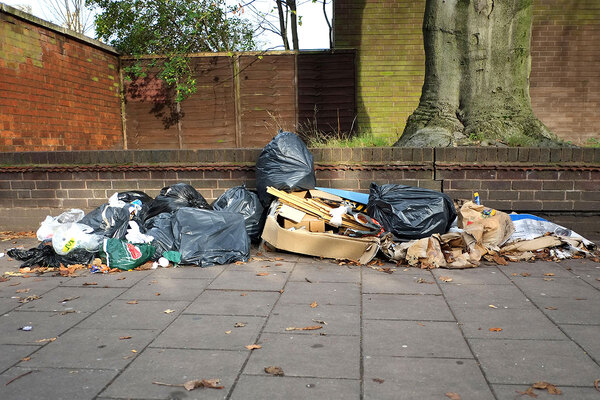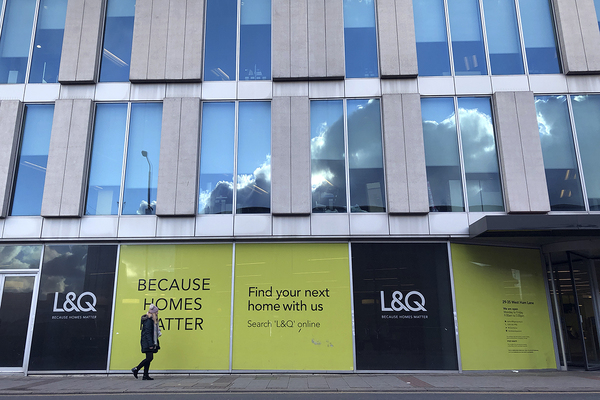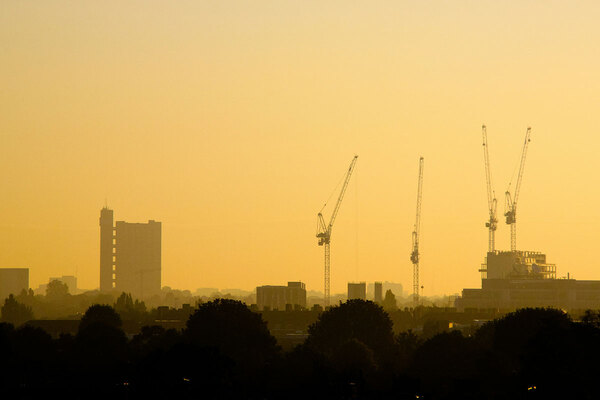You are viewing 1 of your 1 free articles
New ombudsman tables reveal worst-performing landlords on damp and mould
The Housing Ombudsman has unveiled a series of tables highlighting the worst performers regarding damp and mould in homes as part of a new ‘spotlight’ report into the issue.
Between April 2019 and March 2021 the watchdog examined 410 complaints related to damp and mould, investigated 142 landlords and made maladministration findings in 56% of cases. This rose to 64% for complaint-handling.
The first table, ordered by maladministration findings per 10,000 homes so that the size of the organisation is taken into account, lists the highest number of damp and mould cases per social landlord.
Hammersmith and Fulham Council topped the list at 10.8 findings per 10,000 homes, followed by A2Dominion Housing Group at a rate of 3, Camden Council at 2.5, and Lambeth Council at 2.
Overall, the top 10 landlords paid out more than £57,000 in compensation, with Camden paying out the most at £11,692.
The ombudsman also provided a table showing how smaller landlords – those with between 1,000 and 10,000 homes – performed.
The top three worst performing were Harrow Council, with a maladministration finding rate of 5 per 10,000 homes, followed by Newlon Housing Trust at 4.1 and Waltham Forest Council at 1.
In total, the ombudsman found maladministration issues related to damp and mould in 40% of the 410 cases it looked into, making 373 findings and issuing 286 orders. Landlords were ordered to pay a total of £87,553 in compensation across 177 cases.
While the first two tables dealt with complaints directly to the ombudsman from tenants around disrepair, the ombudsman also assesses landlords’ performance with regard to complaints made directly to it by residents. A performance table related to complaint-handling by landlords was also published.
Hammersmith and Fulham topped the list with a maladministration rate of 3.3 per 10,000 homes, followed by Camden Council at 1.9, Lambeth Council at 1.7 and Southwark Council at 1.1.
The table was dominated by councils but Clarion was also on the list, with the ombudsman finding six maladministration findings from seven findings, at a rate of 0.6 per 10,000 homes across its stock.
Sanctuary was issued four maladministration findings from a total of five findings, averaging out at 0.5 maladministration findings per home.
The ombudsman made 144 findings and 105 orders relating to complaint-handling, including £12,556 in compensation in 84 cases.
Following all the investigations covered in the report, the watchdog made 501 orders, including £123,094.57 in compensation across 222 cases, with sums of more than £1,000 being ordered in 21 cases.
The majority (52%) of those investigated for maladministration were large landlords with more than 10,000 homes. They represented 55% of maladministration findings.
Local councils and landlords covering high-density urban areas, with more flats and converted properties, had the highest maladministration rate.
The figures emerged in the watchdog’s fifth thematic ‘spotlight’ report, which investigates how damp and mould cases are being dealt with and best practice.
It urges social landlords to adopt a zero-tolerance approach when responding to damp and mould issues.
While its investigations did not find causation in terms of health conditions, residents living in homes with damp and mould may be more likely to have respiratory problems, allergies, asthma and other conditions that affect their immune systems.
“This, set against the context of the COVID-19 pandemic, highlights the potential seriousness of this issue for residents,” the report states.
The ombudsman found the failure rate for landlords was often down to inaction, excessive delays or poor communication.
In one case study, a tenant had to wait five years to have their complaint about damp resolved.
Along with casework, the ombudsman heard from tenants, who said they were frustrated, felt like they were not being heard, and that their landlords were not taking their repair reports or complaints seriously.
Though the report recognises the challenges facing landlords, including overcrowding, poverty, the age and design of homes, it says they should avoid inferring residents are to blame due to “lifestyle”, “when it is often not solely their issue, and take responsibility for resolving problems”.
Richard Blakeway, the housing ombudsman, said it is “clear that a strategic response to damp and mould is required, particularly in the context of decarbonisation”.
The report notes two “key systemic issues” that persist across the ombudsman’s casebook – over-reliance on residents and a lack of overall responsibility for ensuring complaints are resolved.
The ombudsman, which made 26 recommendations for landlords in the report, has urged the sector to change from a reactive to proactive culture when it comes to addressing damp and mould, which must be a “higher priority” for landlords.
Landlords should establish a “clear and transparent framework” on their approach to dealing with the issue and review the accessibility of their systems for reporting repairs and making complaints.
The ombudsman has also recommended that landlords should implement a “data-driven, risk-based approach” with respect to damp and mould, reducing the “over-reliance” on residents to report issues.
Landlords should review, alongside residents, their initial response to reports of damp and mould to ensure they avoid “automatically apportioning blame” or using language that leaves residents feeling blamed, the report states.
They should ensure their responses are “timely and reflect the urgency of the issue”, ensure their staff know how to identify the early stages of damp and mould, and should regularly communicate with residents to update them on any action taken.
Where extensive works may be required, landlords should consider the individual circumstances of the household, “including any vulnerabilities” and make sure they treat residents reporting damp and mould with “respect and empathy”.
Mr Blakeway said: “Our high maladministration rate shows that a fairer approach is needed.
“A zero-tolerance approach does not mean zero cases but it requires changes in culture, behaviour and approach by landlords – from reactive to proactive and from inferring blame to taking responsibility.”
He added: “Landlords also need to ‘find their silences’ where complaints are not being raised when other indicators suggest there may be issues.
“Crucially, this includes maximising the potential for the complaints procedure to resolve issues and learn, without losing empathy when engaging with residents who can be deeply distressed.”
Landlords with more than 10,000 homes
| Landlord | All damp and mould cases | Cases with maladministration | Maladministration percentage | Number of homes | Maladministration rate per 10,000 homes |
| Hammersmith & Fulham Council | 23 | 15 | 65% | 12,022 | 12.5% |
| Haringey Council | 10 | 6 | 60% | 15,106 | 4% |
| A2Dominion | 12 | 11 | 92% | 33,106 | 3.3% |
| Camden Council | 12 | 9 | 75% | 32,351 | 2.8% |
| Lambeth Council | 11 | 6 | 55% | 24,051 | 2.5% |
| Southwark Council | 13 | 10 | 77% | 53,600 | 1.9% |
| Leeds City Council | 16 | 9 | 56% | 56,654 | 1.6% |
| Birmingham City Council | 14 | 9 | 64% | 65,600 | 1.4% |
| Clarion Housing Group | 21 | 14 | 67% | 109,545 | 1.3% |
| Islington Council | 11 | 4 | 36% | 34,594 | 1.2% |
| Sanctuary Housing Association | 16 | 8 | 50% | 75,831 | 1.1% |
| L&Q | 14 | 8 | 57% | 79,811 | 1% |
| Notting Hill Genesis | 10 | 4 | 40% | 50,466 | 0.8% |
Landlords with fewer than 10,000 homes
| Landlord | All damp and mould cases | Cases with maladministration | Maladministration percentage | Number of homes | Total compensation | Maladministration rate per 10,000 homes |
| Harrow Council | 4 | 3 | 75 | 5,969 | £774.00 | 5% |
| Newlon Housing Trust | 4 | 3 | 75 | 7,241 | £4,566.50 | 4.1% |
| Waltham Forest Council | 5 | 1 | 20 | 9,653 | £1,130 | 1% |
Complaint-handling performance
| Landlord | All findings | Findings with maladministration | Maladministration percentage | Number of homes | Maladministration rate per 10,000 homes |
| Hammersmith & Fulham Council | 7 | 4 | 57% | 12,022 | 3.3% |
| Camden Council | 8 | 6 | 75% | 32,351 | 1.9% |
| Lambeth Council | 6 | 4 | 67% | 24,051 | 1.7% |
| Southwark Council | 6 | 6 | 100% | 53,800 | 1.1% |
| Birmingham City Council | 5 | 5 | 100% | 65,600 | 0.8% |
| Clarion Housing Group | 7 | 6 | 86% | 109,545 | 0.6% |
| Sanctuary Housing Association | 5 | 4 | 80% | 75,831 | 0.5% |
Landlords’ responses
Gary Blatcher, director of customer experience at A2Dominion, said: “We take issues affecting the health and well-being of our customers very seriously.
“The historic level of service failure or maladministration (both classified as maladministration in the spotlight report), was higher in 2019/20 than we would expect, with 10 findings over a two-year period.
“This falls below the high standards we set for ourselves and we apologise for any failings our customers experienced during this time.
“As a result, we have since introduced a number of changes to address this. These include putting together a taskforce led by senior managers to address priority issues affecting customers.
“Measures put in place include a dedicated process to make proactive contact and conduct property reviews whenever a customer has mentioned damp or mould.
“We have also introduced a new case review in the complaints process to ensure we are doing as much as we can to address complaints raised. Subsequently, during the period of March to September of this year, 41% of escalations to the housing ombudsman were not upheld.
“Alongside the progress we have already made, we will take on board the recommendations from the report to continue improving.”
A spokesperson for Clarion said: “All Clarion residents have the right to live in comfort and we take the complex problem of damp and mould very seriously.
“The cases published today are historic and we have since committed to a more proactive approach involving sharing and adopting best practice, listening and working more closely with our residents and trialling new technology to help us identify and resolve issues more quickly.”
A Leeds City Council spokesperson, said: “As a council we remain committed to providing good-quality homes free from damp and mould for all customers.
“As part of this commitment we value customer feedback and will continue to learn from any mistakes made in dealing with complaints.
“We will review the findings of the ombudsman report and look to act on its recommendations to ensure the delivery of good-quality homes for all customers.”
An L&Q spokesperson said: “The safety and welfare of residents is our number-one priority, and we take reports of mould and damp in any home very seriously.
“We are sorry that in some cases, as highlighted by this report, our service has fallen short of the standard we expect.
“No one should have to endure poor conditions in their home, and we are deeply committed to learning from these judgements and making sure that every resident has a quality home they can be proud of.
“In April 2020, we introduced our Healthy Homes programme, which focuses on tackling the root cause of mould and damp and delivering any repairs needed to prevent damp and mould from re-occurring.
“As part of that, our specialist contractor has already carried out over 8,000 home assessments and installed 6,500 sensors, which identify if the conditions in a home could encourage mould growth and help us work with residents to manage this.
“We’ve also cleaned and shielded over 46,000 surfaces and offered support to many homes where fuel poverty may be contributing to problems through targeted energy advice visits.”
A spokesperson for Notting Hill Genesis said: “We are sorry that we haven’t dealt as effectively as we should have done with problems related to damp and mould in some cases and for the understandable frustration this will have caused the residents involved.
“We know we have more to do both in addressing problems with damp and mould in the first place and in responding effectively to complaints when they arise.
“Our new housing management model will help – it offers every resident a named local officer to provide one point of contact for all issues and we’re working hard to embed and reinforce that model as we reconnect with our residents post-lockdown.”
Meric Apak, Camden’s cabinet member for better homes, said: “We have been taking proactive action to help residents experiencing damp or mould by creating a dedicated team who work closely with our residents to establish the underlying causes of damp and mould within their homes.
“They are supported by a new customer services team who provide case management and a complaints function.
“Following a survey of each property by a specialist surveyor, we identify and carry out any related repairs, as well as working with the residents to help reduce any other factors which may be contributing to condensation-related damp and mould.”
Sign up for our regulation and legal newsletter
Already have an account? Click here to manage your newsletters
